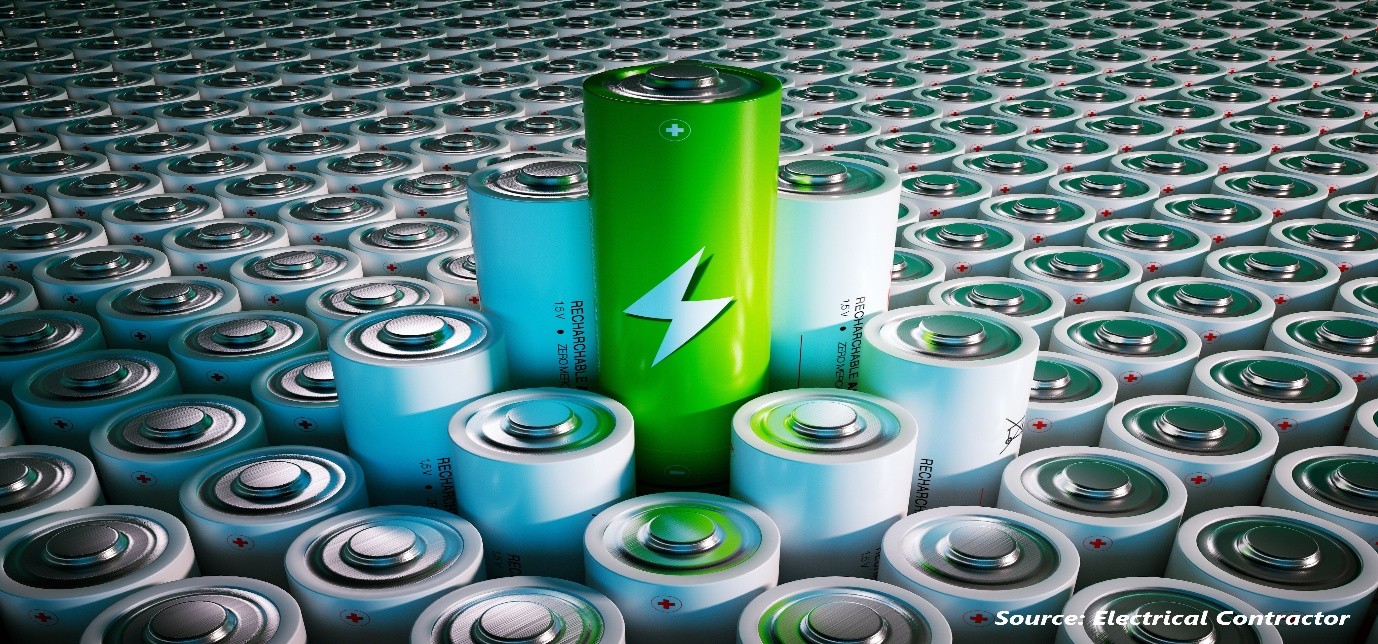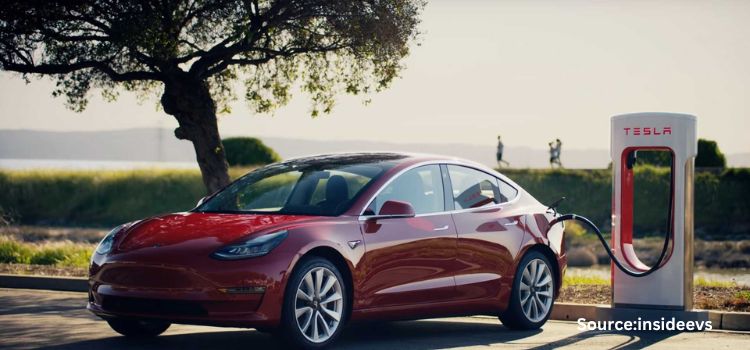
Norway Battery Market by Type (Lead Acid, Lithium Ion, Nickel Metal Hydride, Nickel Cadmium, and Others), by Application (Residential, Industrial, and Commercial), and by Power Systems (Fuel Cell Batteries, Proton-Exchange Membrane Fuel Cells, Alkaline Fuel Cells, Phosphoric Acid Fuel Cells, Solid Oxide Fuel Cells, Molten Carbonate Fuel Cells, Air Cells, Flywheel Energy Storage, Nuclear Batteries) – Opportunity Analysis and Industry Forecast 2023-2030
Industry: Energy & Power | Publish Date: 13-Feb-2025 | No of Pages: 207 | No. of Tables: 166 | No. of Figures: 111 | Format: PDF | Report Code : EP707
US Tariff Impact on Norway Battery Market
Trump Tariffs Are Reshaping Global Business
Market Definition
Norway Battery Market was valued at USD 1.58 billion in 2022, and is predicted to reach USD 6.63 billion by 2030, with a CAGR of 19.6% from 2023 to 2030.
A battery operates as a mechanism that stores energy and later releases it by transforming chemical energy into electrical energy. Typically, batteries produce electricity by harnessing one or more electrochemical cells. Batteries can be categorized into two distinct types: primary batteries and secondary batteries. Primary batteries, also known as non-rechargeable batteries, offer a straightforward and convenient energy supply for various portable electronic and electrical devices, including cameras, watches, toys, lights, radios, and more. In contrast, secondary batteries, often referred to as rechargeable batteries, possess the capability to be recharged electrically once they've been depleted. These energy storage solutions have evolved into indispensable sources of power in our daily routines. The progress of cutting-edge technologies, encompassing smartphones, tablets, laptops, solar energy systems, and electric vehicles (EVs), has ushered in the era of robust batteries capable of prolonged endurance and providing essential energy requirements.
Norway's Pioneering Role in Electric Vehicle Adoption and Sustainable Transportation Initiatives
Norway is one of the leading countries in terms of EV adoption. According to the Norwegian EV Association, 64.5% of all new cars sold in the country were fully electric in the year of 2021. The high penetration of EVs can be attributed to factors such as favorable initiatives undertaken by the government, which attract consumers to opt for EVs, such as no purchase or import tax on EVs, exemption from 25% vat on purchase of newer EVs, maximum 50% of the total amount on ferry fares for electric vehicles, maximum 50% of the total amount on toll roads, access to bus lanes, and charging rights for people living in apartment buildings. Moreover, the Norwegian Parliament decided on a national goal that all new cars sold by 2025 should be zero-emission, including electric or hydrogen fueled vehicles.
For instance, in January 2021, the government in Norway announced an action plan to achieve its climate target and reduce greenhouse gas emissions from transport and emissions from industrial production. Under this plan, Norway is aggressively adopting electric public transport to eliminate emissions. According to Statistics Norway, as of 2021, the total number of registered electric buses in Norway is 546. Electric buses use lithium-ion batteries to operate as they offer high energy density and high recharge or de-charge cycles.
Government-Led Initiatives Bolstering Domestic Battery Value Chain in Norway
The government has undertaken several initiatives to promote homegrown industries in the battery value chain, which further boosts the market in the country. For instance, in June 2022, Norwegian government announced a new national battery strategy policy. Under this policy, Norway has assured financial and strategic support to Norway-headquartered battery cell manufacturing company FREYR Battery for the construction of its first battery giga factory in Norway. Such factors are driving the battery market in Norway.
Safety Issues Related to Battery Usage in Norway
Improper handling of batteries carries a range of risks to both human health and the environment. The incorrect disposal of used or drained batteries is a prevalent practice, resulting in their deposition in landfills where they gradually break down, releasing hazardous substances. As these batteries deteriorate over time, they emit chemical elements that can infiltrate the soil, adversely affecting both surface water and groundwater. As a result, this pollution disrupts the ecosystem, endangering aquatic plants and animals that come into contact with detrimental battery elements like mercury, cadmium, lithium, and lead. Consequently, these issues are expected to hinder the growth of the battery market.
Introduction of Nano-Diamond Batteries (NDB) in Multiple Industries
The growing adoption of Nuclear Diamond Batteries (NDBs) across various sectors including automotive, aerospace, and electronics is positioned to create fresh avenues in Norway's battery market. NDBs represent a groundbreaking leap in energy generation and storage, fundamentally reshaping conventional battery concepts. These batteries showcase remarkable endurance by harnessing the energy derived from the radioactive decay of nuclear waste. The trajectory of Norway's battery market is being shaped by the compelling attributes of NDBs, which encompass their compact form, adaptability, cost-efficiency, and scalability across a wide array of applications, ranging from compact chipsets to expansive industrial setups. Functioning as advanced diamond-based alpha, beta, and neutron voltaic batteries, NDBs offer a consistent source of clean energy for a diverse spectrum of applications, surpassing the performance of traditional chemical batteries.
Competitive Landscape
The Norway battery industry includes several market players such as LG Chem Ltd., CATL, Samsung SDI Co. Ltd., BYD, SKI, ENVISION AESC GROUP LTD., Gotion High tech Co Ltd, Primearth EV Energy Co., Ltd., China Aviation Lithium Battery Co., Ltd., Panasonic Corporation.
Key Benefits
-
The Norway battery market report provides a quantitative analysis of the current market and estimations through 2023-2030 that assists in identifying the prevailing market opportunities to capitalize on.
-
The study comprises a deep dive analysis of the market trend including the current and future trends for depicting the prevalent investment pockets in the market.
-
The information related to key drivers, restraints, and opportunities and their impact on the market is provided in the report.
-
The competitive analysis of the market players along with their market share in the Norway battery market.
-
The SWOT analysis and Porter’s Five Forces model are elaborated in the study.
-
Value chain analysis in the market study provides a clear picture of the stakeholders’ roles.
Norway Battery Market Key Segments
By Type
-
Stationary
-
Motive
By Battery Type
-
Primary Batteries (Non-rechargeable)
-
Alkaline Batteries
-
Zinc-Carbon Batteries
-
Lithium-Thionyl Chloride Batteries
-
-
Secondary Batteries (Rechargeable)
-
Lead-Acid Batteries
-
Nickel-Cadmium (NiCd) Batteries
-
Nickel-Metal Hydride (NiMH) Batteries
-
Lithium-ion Batteries
-
Lithium Nickel Manganese Cobalt (LI-NMC)
-
Lithium Iron Phosphate (LFP)
-
Lithium Cobalt Oxide (LCO)
-
Lithium Titanate Oxide (LTO)
-
Lithium Manganese Oxide (LMO)
-
Lithium Nickel Cobalt Aluminum Oxide (NCA)
-
-
Other Secondary Batteries
-
By Voltage Type
-
Low Voltage Batteries (1V - 12V)
-
Medium Voltage Batteries (24V - 100V)
-
High Voltage Batteries (200V - 1000V)
By Power Capacity
-
Low Capacity Batteries (Up to 1,000 mAh)
-
Medium Capacity Batteries (1,000 mAh to 10,000 mAh)
-
High Capacity Batteries (10,000 mAh to 100,000 mAh)
-
Ultra High Capacity Batteries (More than 100,000 mAh)
By Self-Discharge Rate
-
Low Self-Discharge Rate Batteries
-
Medium Self-Discharge Rate Batteries
-
High Self-Discharge Rate Batteries
By Application
-
Residential
-
Industrial
-
Automotive
-
ICE Engines
-
Passenger vehicles
-
Commercial vehicles
-
-
Electric vehicles
-
E-Bikes
-
E-Cars
-
E-Buses
-
E-Trucks
-
-
-
Medical
-
Telecom & IT
-
Consumer Electronics
-
Power & Utility
-
Aerospace & Defense
-
Marine
-
-
Other Industries
Key Players
-
Tesla, Inc.
-
Toshiba Corporation
-
Panasonic Corporation
-
Exide Industries Ltd.
-
Northvolt AB
-
Vattenfall
-
Varta AG
-
ENERGYNEST AS
-
Kyoto Group AS
-
Evyon
-
Morrow Batteries
-
Freyr Battery Norway AS
-
Beyonder
-
Nordic Batteries AS
-
Elinor Batteries
REPORT SCOPE AND SEGMENTATION:
|
Parameters |
Details |
|
Market Size in 2022 |
USD 1.58 billion |
|
Revenue Forecast in 2030 |
USD 6.63 billion |
|
Growth Rate |
CAGR of 19.6% from 2023 to 2030 |
|
Analysis Period |
2022–2030 |
|
Base Year Considered |
2022 |
|
Forecast Period |
2023–2030 |
|
Market Size Estimation |
Billion (USD) |
|
Growth Factors |
The growing government incentives The adoption of hybrid vehicles |
|
Companies Profiled |
15 |
|
Market Share |
Available for 10 companies |
|
Customization Scope |
Free customization (equivalent up to 80 working hours of analysts) after purchase. Addition or alteration to country, regional, and segment scope. |
|
Pricing and Purchase Options |
Avail customized purchase options to meet your exact research needs. |

















 Speak to Our Analyst
Speak to Our Analyst





















